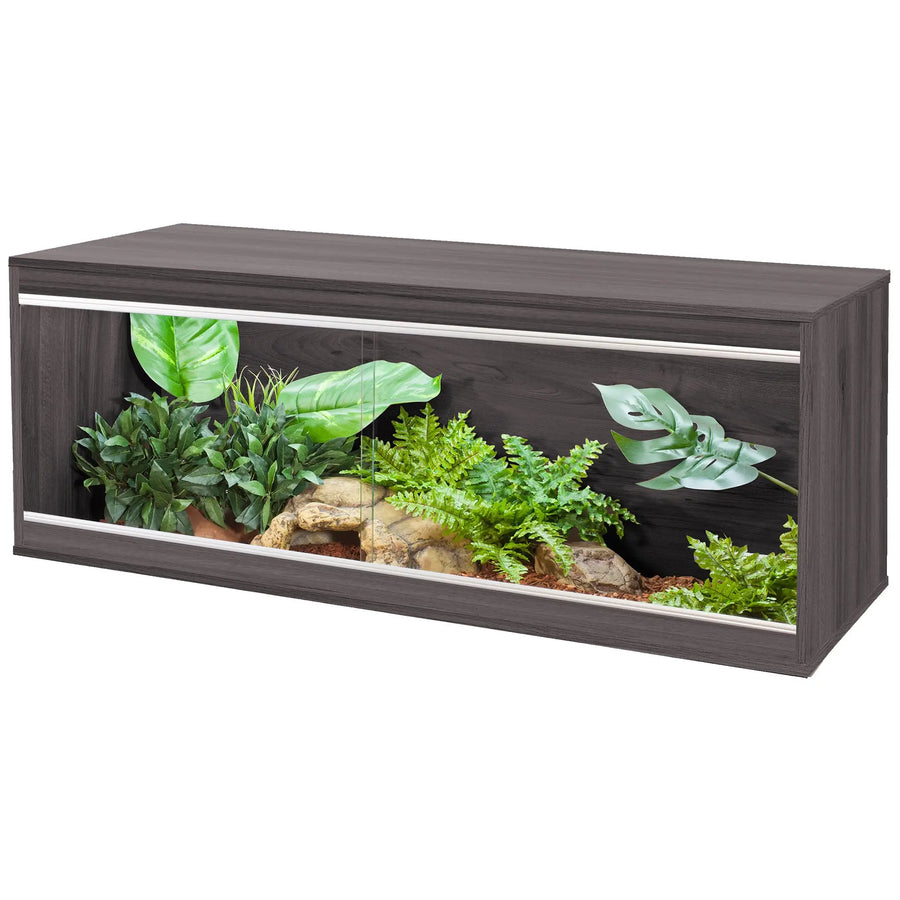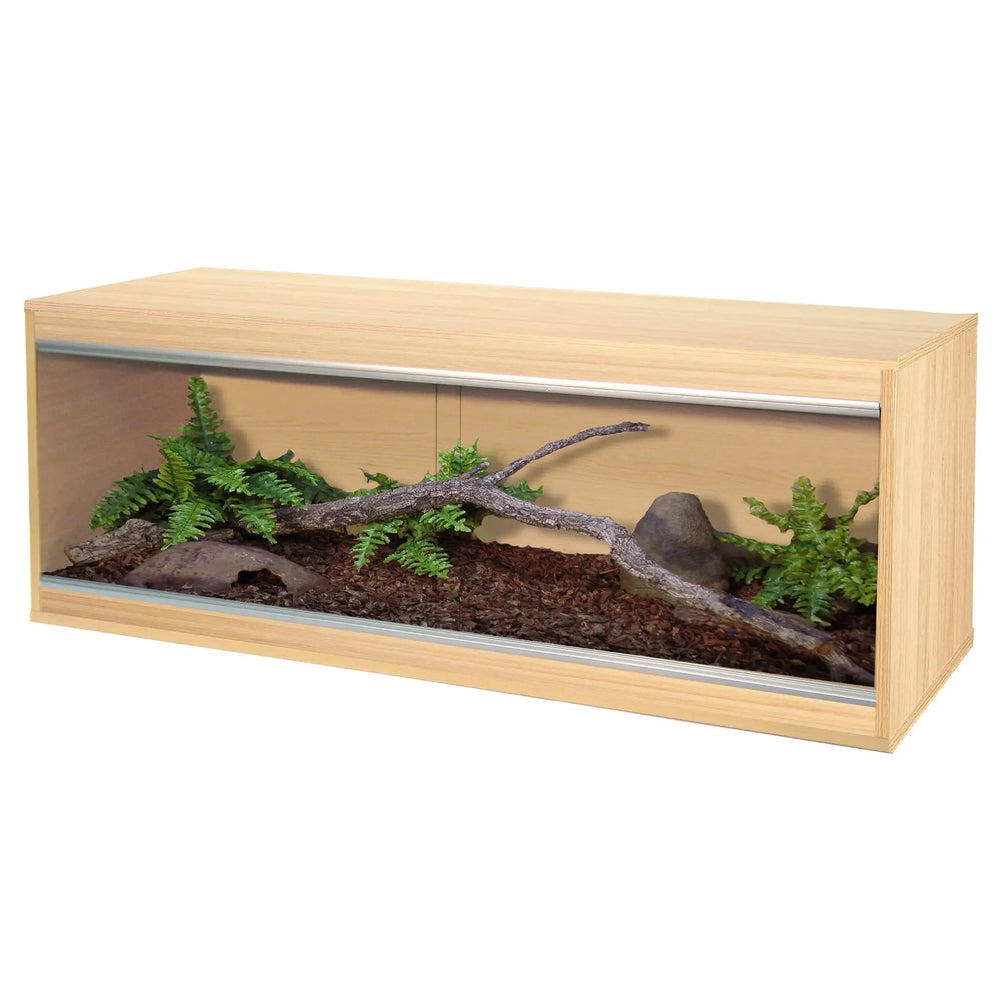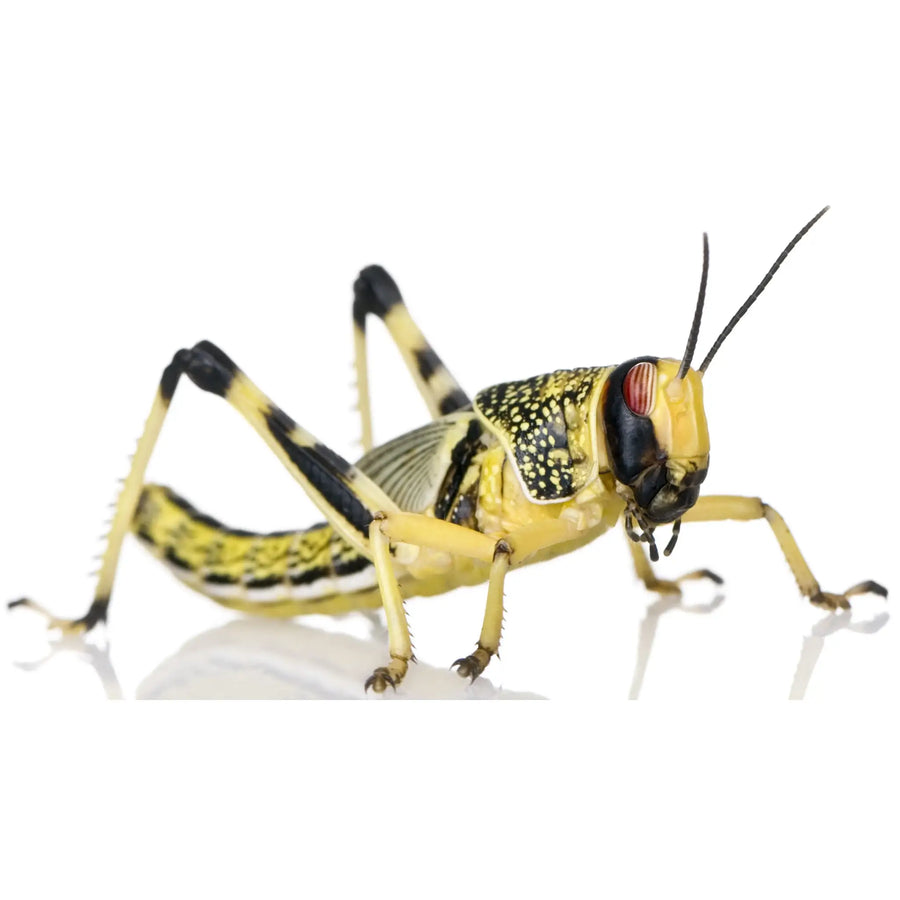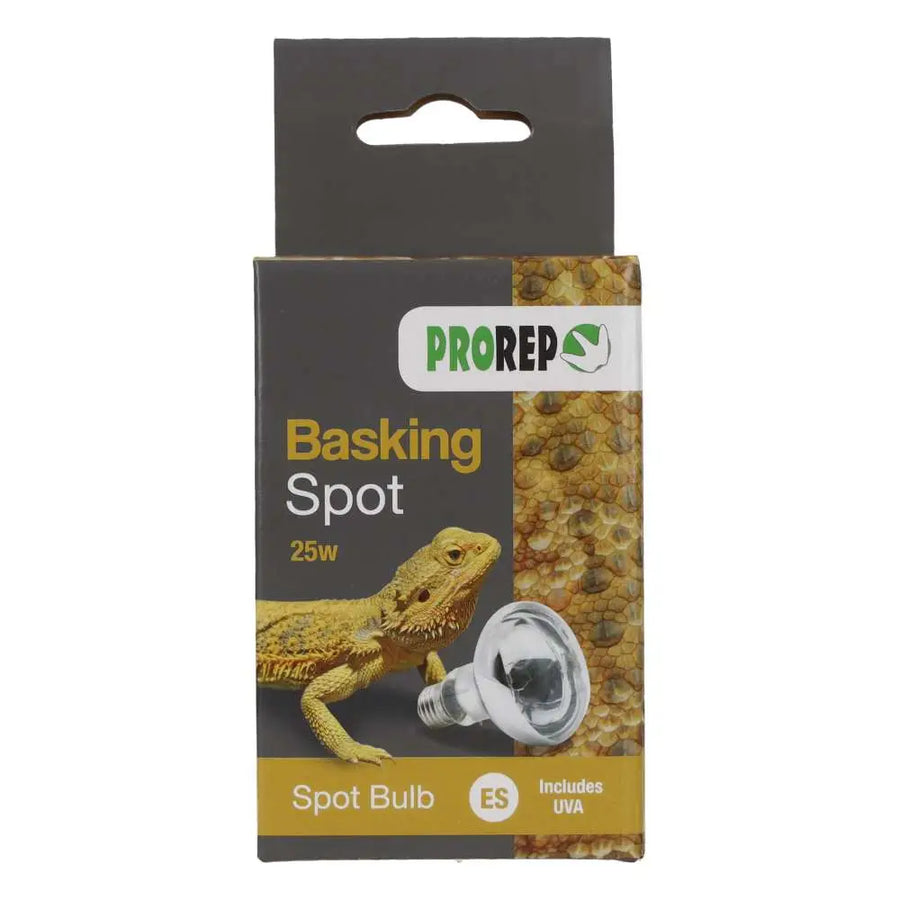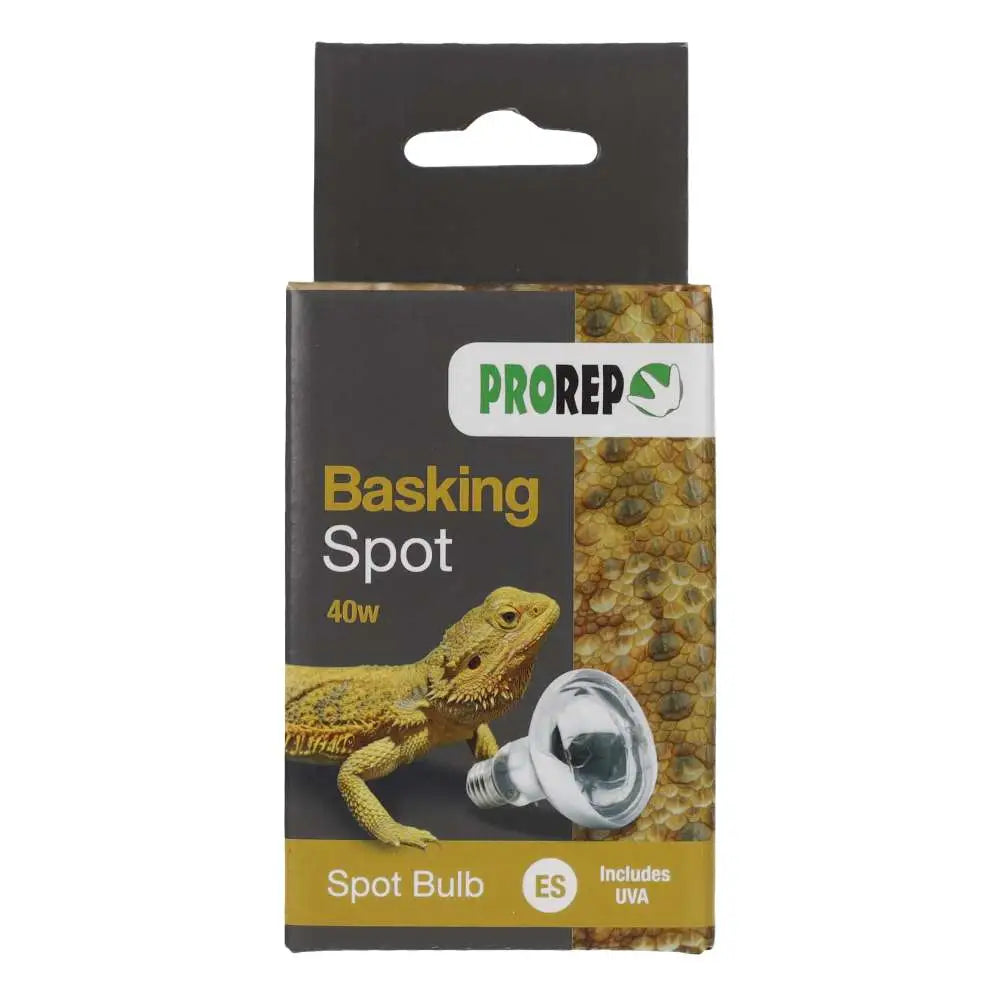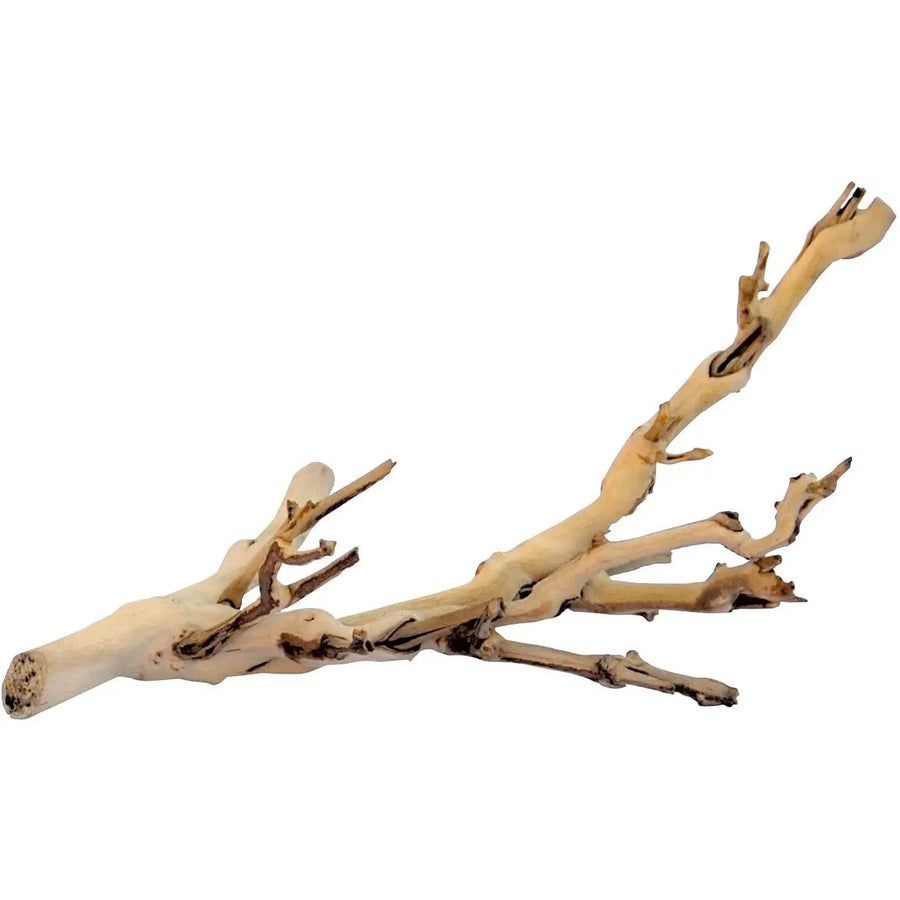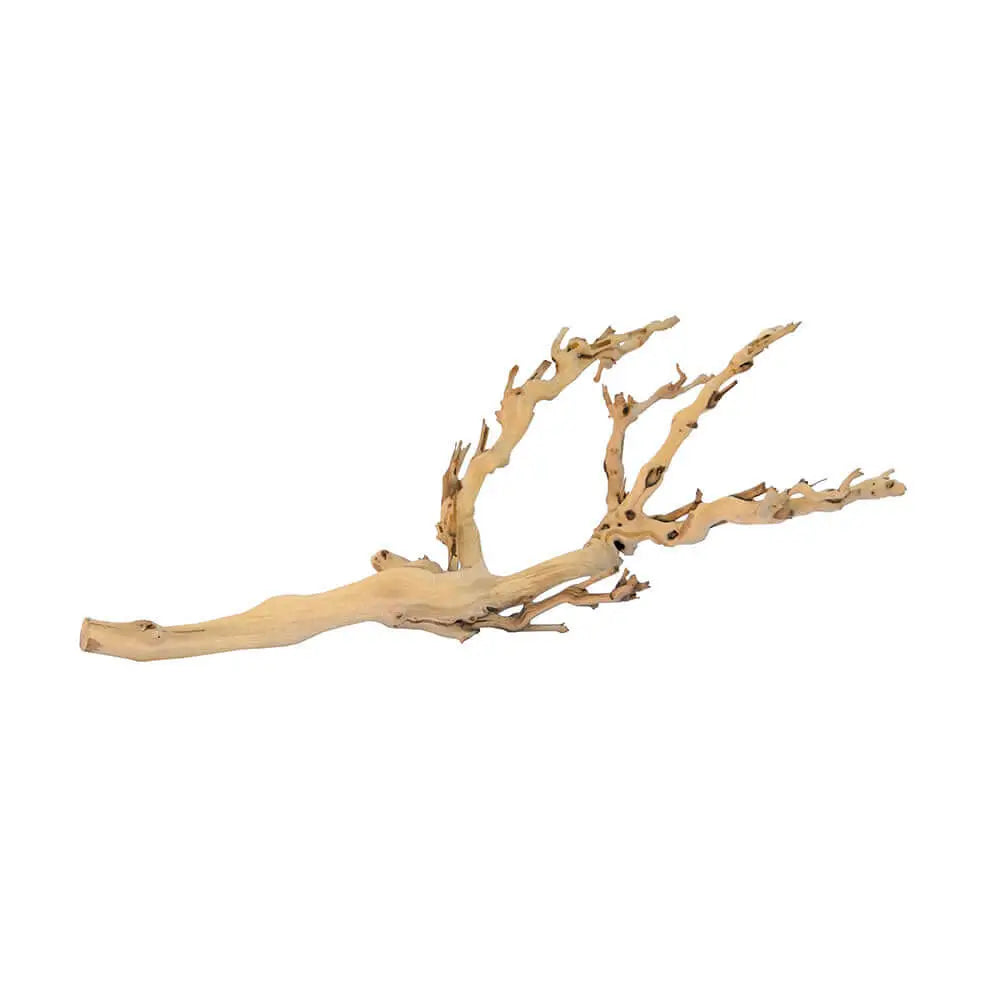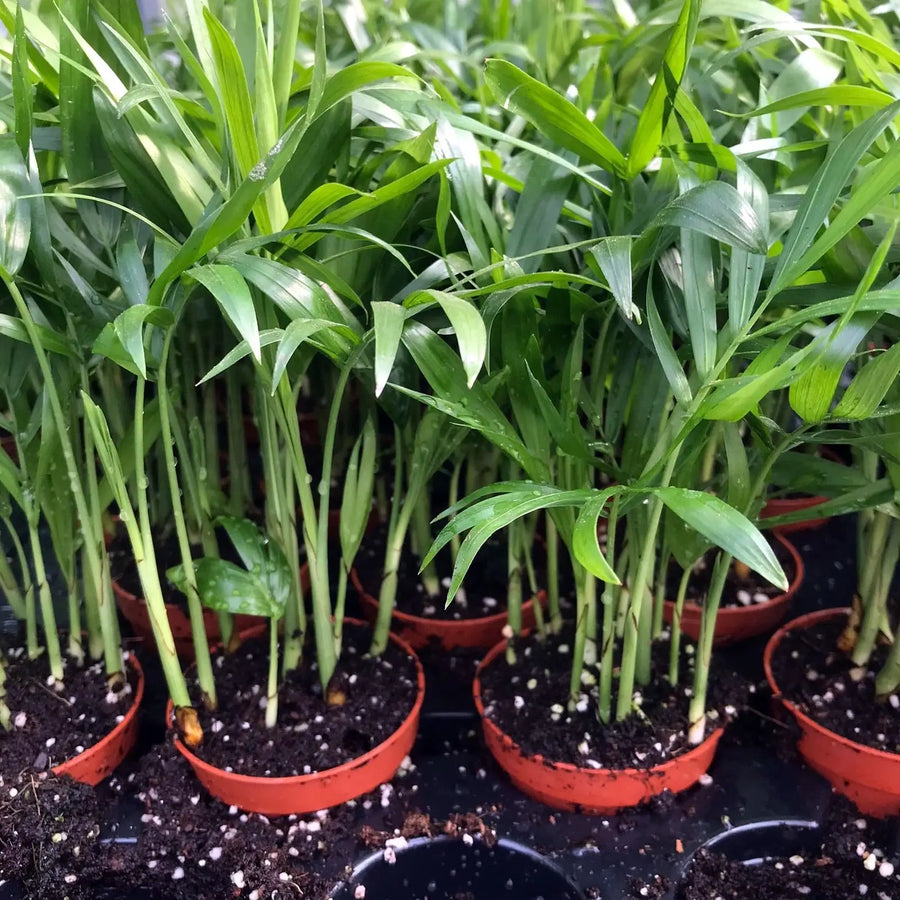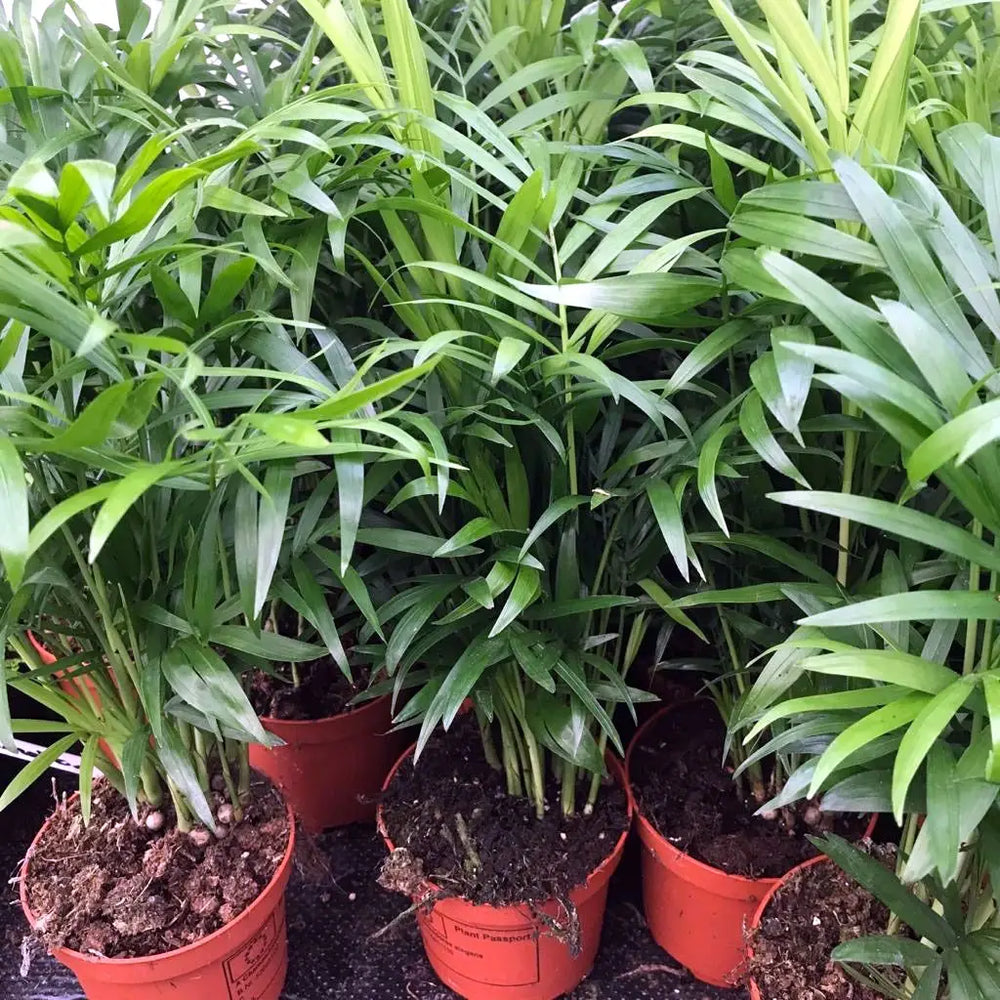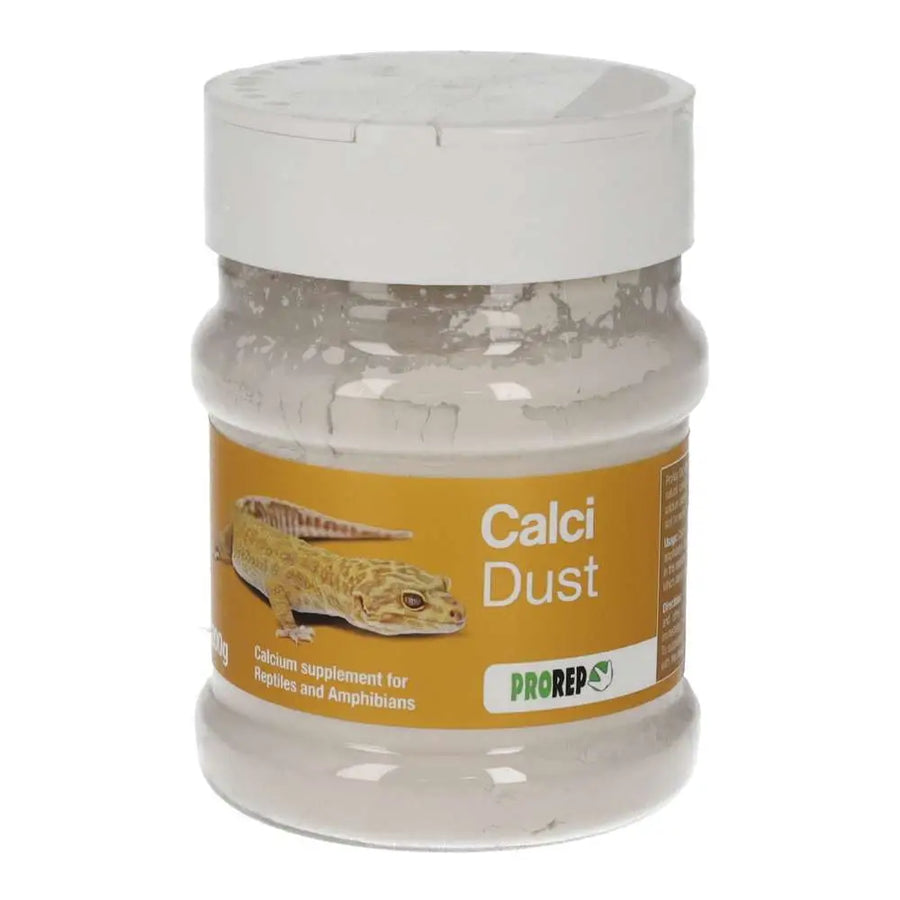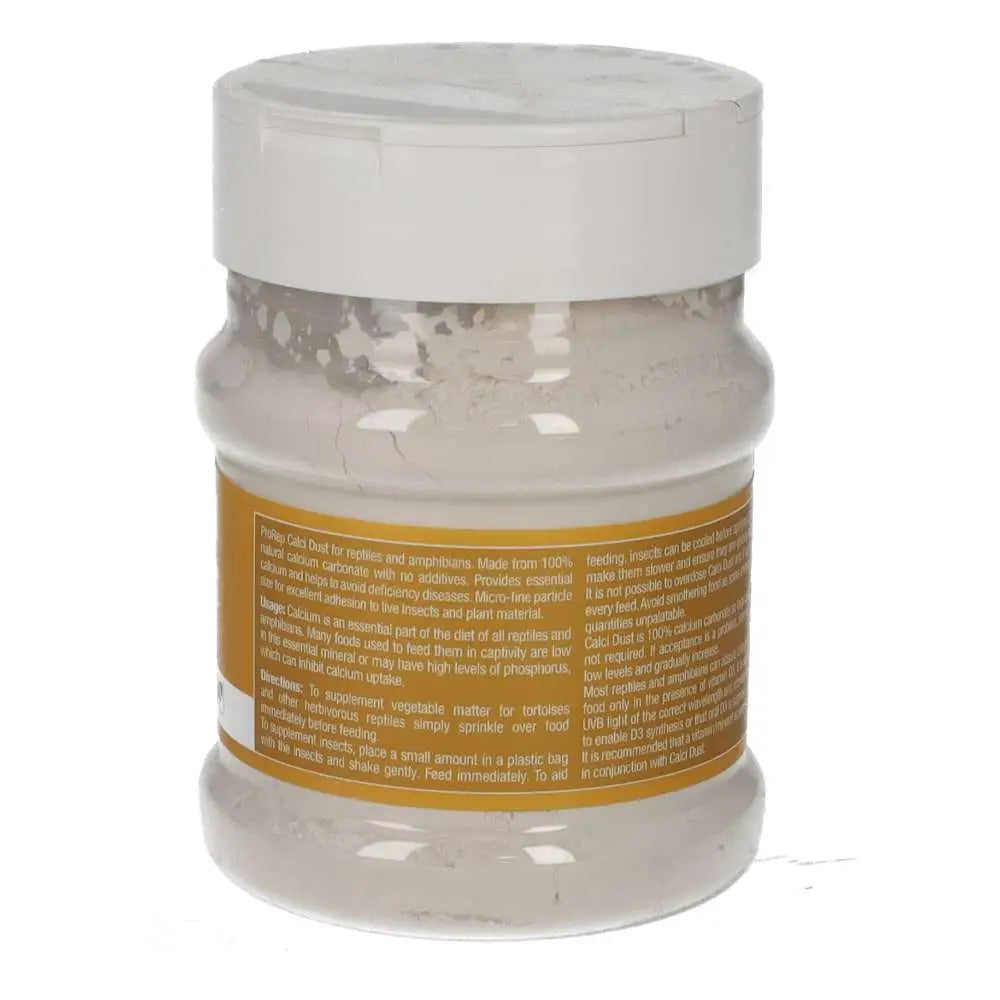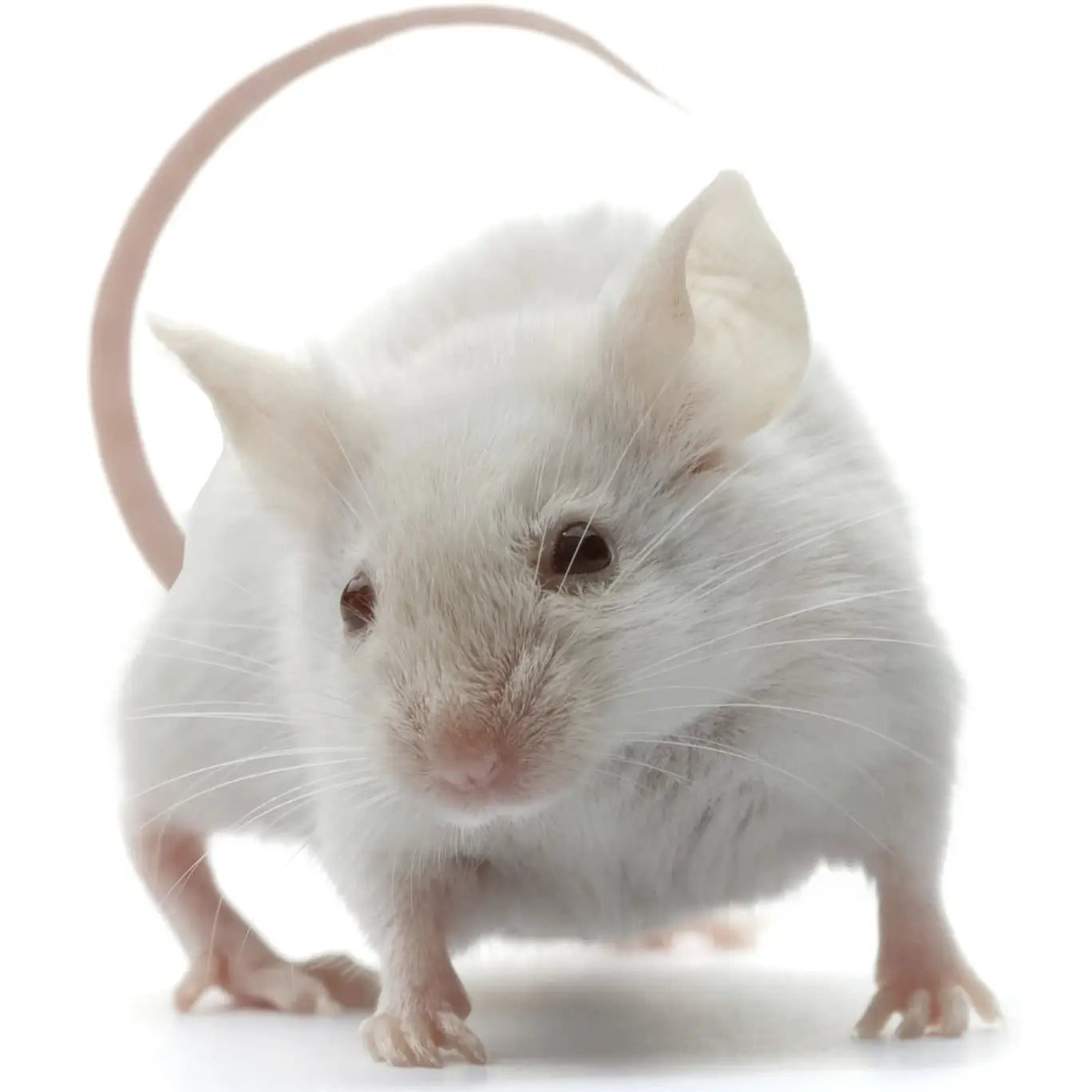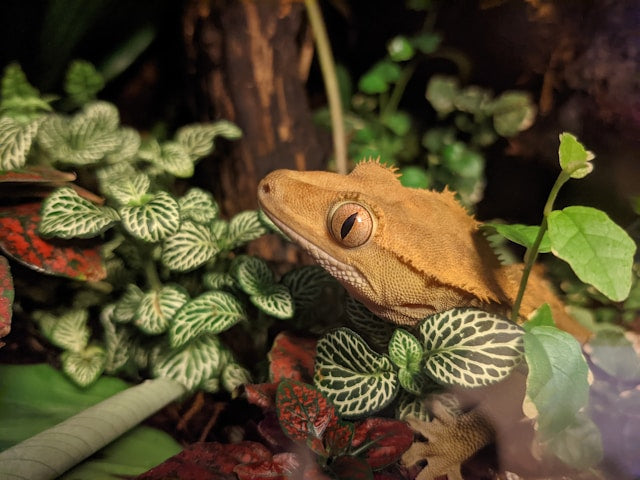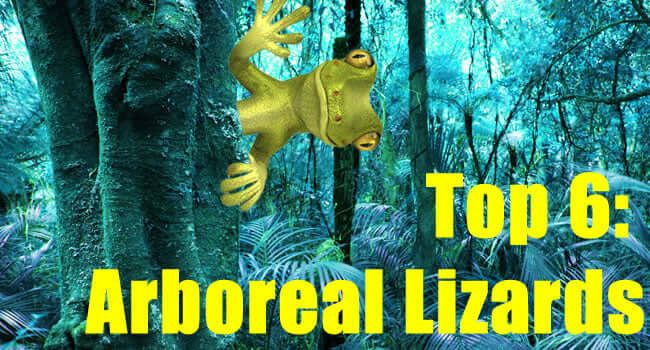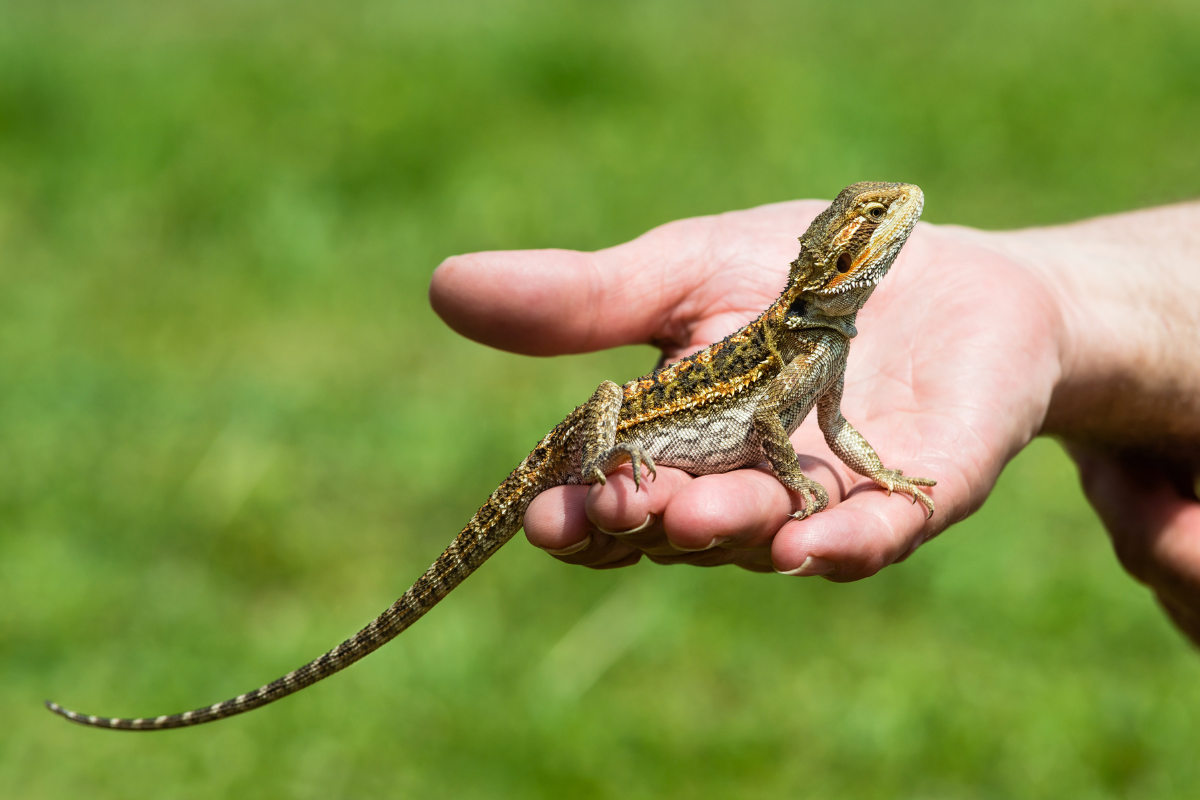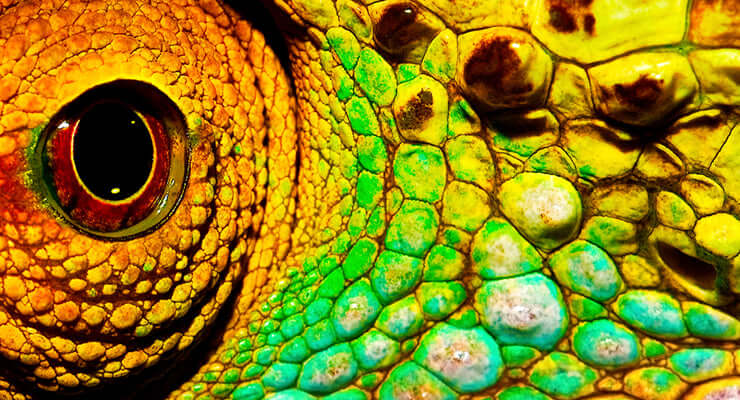
How to Care for a Leopard Gecko: 5 Easy Tips for Enclosures, Diet & More
Leopard geckos are adorable little lizards found naturally in Asia and commonly kept as pets in the UK. They are a crepuscular species, meaning that they are most active shortly after the sun sets and normally retreat to the burrow as the sun is rising.
In captivity, they often ditch this behaviour and become more active in the daytime. Pretty much every leopard gecko will maintain a leisurely lifestyle while the lights are on and run around at night.
In this blog, we will loosely outline the enclosure, conditions required, diet and husbandry.
1. Setting Up a Leopard Gecko Enclosure

Leopard geckos come from a warmer and less humid environment than the UK so we recommend keeping the gecko in an enclosure with insulation. In the UK, we commonly use a wooden vivarium with glass doors and large vents.
Some people have successfully kept the geckos in small enclosures but to make sure that we get both a hot and cold side, we recommend an enclosure around 3ft wide. If you're looking for a complete setup guide and products, check out our Leopard Gecko setup page.
The leopard gecko requires a clear day-night cycle. In the day time, the leopard gecko requires a raised air temperature and a little UVB. At night, they need the enclosure to be much darker and enjoy surface heat radiated by natural rocks and bedding.
For the day time heating, we use a basking lamp controlled by a dimming thermostat. For UVB we commonly use a short 6-7% UVB kit on one side of the enclosure and for night time heating, we use a heat mat controlled by an on/off thermostat.
2. Conditions in the Gecko’s Enclosure

To provide the best care for your leopard gecko, it's crucial to create an environment that mimics their natural habitat. This includes controlling temperature, lighting, and humidity within the enclosure.
Daytime Temperatures and Heating Setup
Leopard geckos enjoy a basking area around 90°F during the day, but we want to make sure they can cool down really easily if they need to.
Generally, we are looking for a horizontal temperature gradient running from one side of the enclosure to the other side. You wouldn’t want to have the basking lamp in the middle of the enclosure unless that enclosure is wide enough to lose heat to both of its ends.
To make sure they aren’t stuck at high temperatures, we use a vivarium wide enough to cool down from one end to the other. We also include plenty of decorations to provide shade.
If we are running the heat gradient from side to side, we would like the UVB gradient to run front to back. To do this, all UVB equipment would be put as close to the back wall as possible. This way the gecko can move left and right to warm up or cool down and they can move back to front to get more or less UVB exposure.
Nighttime Heating
At night, leopard geckos need a cooler environment, but they still require some warmth. Use a heat mat placed on the same side as the basking lamp to maintain a warm spot at night (75-80°F). The heat mat should take over when the lights are turned off, ensuring the gecko doesn’t get too cold.
If you are using soil bedding or live plants, you will not be able to use a heat mat for nighttime heating. Soil and sand are just too good at insulating heat, and it’s unlikely the warmth from the mat will reach the surface.
The heat mats are rarely waterproof, so it’s not a great idea to use them in a bioactive enclosure. If you want a bioactive enclosure, we would swap out the heat mat and on/off thermostat for a ceramic kit and pulse thermostat mounted in the back corner near the basking lamp.
Humidity Control
Leopard geckos thrive in low-humidity environments. Maintaining the right humidity level is essential for their health. Avoid spraying the enclosure frequently, if at all, as high humidity is not suitable for leopard geckos. Instead, provide a humid hide by placing fresh moss inside enclosed decorations such as cork pieces, caves, or moss boxes.
3. Decorating the Enclosure

Leopard geckos aren’t too fussy about the decorations you pick as long as there are plenty of full and partial hiding spots spaced throughout the enclosure. They also appreciate decorations on the warm end that will warm up in the day and radiate heat for a little while after the lamp goes off.
Resin ornaments can be good at this but natural rocks and slate pieces are best. We find that the best decorations are normally hardwood pieces like java or grapevine wood, flat cork pieces and resin caves.
A very important decoration that should be included in every leopard gecko enclosure would be a water bowl. It should be deep enough that the water won’t evaporate quickly but it doesn’t need to be so deep that the gecko could struggle to get out of it. We love the ProRep bowls and ExoTerra water dishes.
4. Feeding the Leopard Gecko

Leopard geckos are carnivorous, meaning that they can eat a varied diet of insects. For this species, we would recommend brown crickets. They are very nutritious, fairly easy for the chameleon to hunt, widely available, and great value for money.
If your gecko will not take them, black crickets and locusts are also a brilliant alternative. Every now and again you might want to provide your gecko a treat; for this purpose, you could feed: waxworms, calciworms, cockroaches, mealworms, or beetle grubs.
The grubs and worms tend to be quite fatty so we normally offer these a maximum of once or twice a week. Mealworms, morio worms and cockroaches can be difficult to digest, so we would normally only provide these to mature geckos (12-18 months or older) and only once or twice a week.
5. Cleaning the Enclosure

Keeping your leopard gecko’s enclosure clean is crucial for maintaining a healthy and comfortable environment. Proper cleaning practices will prevent the buildup of bacteria and keep your gecko happy.
Daily Spot Cleaning
Leopard geckos, like most pets, require regular maintenance to keep their habitat hygienic. Spot cleaning the enclosure daily helps remove waste and uneaten food, reducing the risk of harmful bacteria.
- Remove waste and debris: Check the enclosure daily and remove any faeces, uneaten food, or shed skin.
- Bioactive Enclosures: If you are keeping the gecko in a bio-active enclosure, you can spot clean and monitor the enclosure. It may still be a good item to change out the bedding a few times per year.
Full Clean Every 4 Weeks
A more thorough cleaning should be done approximately every 4 weeks to ensure the enclosure remains hygienic. Here’s the step-by-step process:
- Remove the gecko and decorations: Gently relocate your gecko to a safe temporary space. Take out all decorations, hides, and water dishes.
- Discard old bedding: If you're using a traditional substrate, remove and dispose of the old bedding. In bio-active enclosures, replace bedding a few times a year.
- Disinfect the enclosure: Use a reptile-safe disinfectant to clean all surfaces. Spray it evenly and leave it to sit for 30 seconds (or as per the product instructions). Wipe down the surfaces with paper towels to remove all residues. In some cases, you might want to repeat this process a second time to ensure that the enclosure is thoroughly cleaned.
- Clean the decorations: Spray the decorations with reptile-friendly disinfectant, then rinse them thoroughly with water. Dry the items completely before returning them to the enclosure.
We recommend this process be done during the day time to make sure that the gecko will be going back to a warm vivarium for at least an hour before the basking lamps are turned off for the night.
Final Thoughts
If you need any further information on caring for leopard geckos, or if you have specific questions about enclosures, feeding, or general care, feel free to contact us.
Our team at Reptile Centre is always happy to provide expert advice and guidance to help you create the perfect environment for your gecko. You can contact us by email at sales@reptilecentre.com or give us a call at 01604 753823.
Whether you're a first-time reptile owner or an experienced keeper, we're here to support you with all your reptile care needs.


